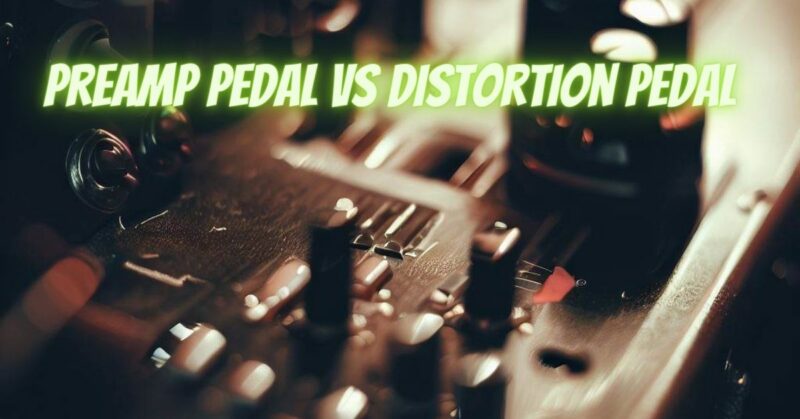Preamp pedals and distortion pedals are two of the most popular types of guitar pedals. They both have the ability to add gain and distortion to your sound, but they do it in different ways.
A preamp pedal is designed to boost the signal from your guitar, giving you more control over the overall tone and volume. Distortion pedals, on the other hand, are designed to add distortion to your sound, creating a more aggressive and saturated tone.
Preamp Pedals
- What is a preamp pedal? A preamp pedal is a type of guitar pedal that boosts the signal from your guitar, giving you more control over the overall tone and volume. Preamp pedals are often used to add clarity and definition to your sound, or to create a more powerful and punchy tone.
- How do preamp pedals work? Preamp pedals work by amplifying the signal from your guitar. This amplification can be used to increase the overall volume of your sound, or to add gain and distortion. Preamp pedals typically have a number of controls that allow you to adjust the tone of your sound, such as the gain, volume, and EQ.
- What are the benefits of using a preamp pedal? There are a number of benefits to using a preamp pedal, including:
- Increased volume and gain
- More control over the tone of your sound
- The ability to use your amp in a clean setting
- What are the drawbacks of using a preamp pedal? There are a few drawbacks to using a preamp pedal, including:
- They can add noise to your signal
- They can be expensive
- Which preamp pedal is right for me? There are a number of great preamp pedals on the market, so it can be tough to decide which one is right for you. Some factors to consider include your budget, the type of sound you’re looking for, and the features you need.
Distortion Pedals
- What is a distortion pedal? A distortion pedal is a type of guitar pedal that adds distortion to your sound. Distortion pedals are often used to create a more aggressive and saturated tone, but they can also be used to add subtler levels of distortion.
- How do distortion pedals work? Distortion pedals work by clipping the signal from your guitar. This clipping creates a distorted sound that is often described as being “smooth” or “creamy.” Distortion pedals typically have a number of controls that allow you to adjust the tone of your sound, such as the gain, volume, and tone.
- What are the benefits of using a distortion pedal? There are a number of benefits to using a distortion pedal, including:
- Added distortion
- Increased sustain
- More control over the tone of your sound
- What are the drawbacks of using a distortion pedal? There are a few drawbacks to using a distortion pedal, including:
- They can add noise to your signal
- They can be expensive
- Which distortion pedal is right for me? There are a number of great distortion pedals on the market, so it can be tough to decide which one is right for you. Some factors to consider include your budget, the type of sound you’re looking for, and the features you need.
Table of Comparison
| Feature | Preamp Pedal | Distortion Pedal |
|---|---|---|
| Purpose | Boost signal and add clarity | Add distortion |
| Controls | Gain, volume, EQ | Gain, volume, tone |
| Sound | Clean, clear, defined | Aggressive, saturated, distorted |
| Use cases | Clean amp, boost other pedals | Solos, rhythm, lead |
| Price | $$ – $$$ | $$ – $$$ |
Conclusion
Preamp pedals and distortion pedals are both great tools for guitarists. They can be used to add gain and distortion to your sound, but they do it in different ways. Preamp pedals are designed to boost the signal from your guitar, while distortion pedals are designed to add distortion.
The best way to decide which type of pedal is right for you is to experiment with different pedals and see what sounds best to you. There is no right or wrong answer, and it ultimately comes down to personal preference.


